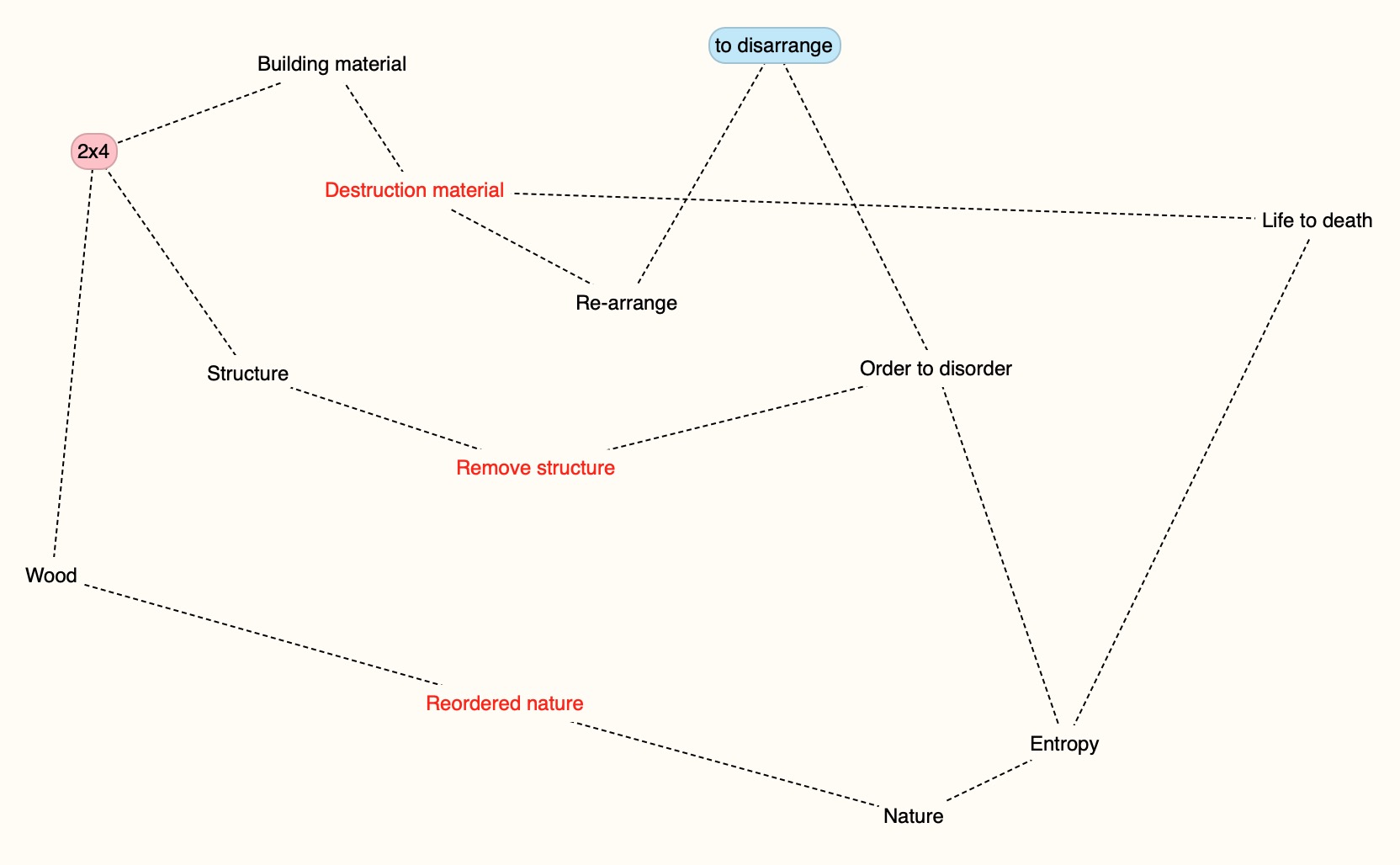Part 1

In this project, you will start with a single eight foot two by four. This is your material for the sculpture you are going to make. Any good sculptor knows the materials they use inside and out. In order for you to get to know your material, you will take your material out for the day. Take your board:
- On a hike.
- On the metro.
- On the bus.
- To the movies.
- Out to dinner.
- To the arboretum.
- To the beach.
- To the art museum.
- Wherever you can think of!
Take 5 pictures of you and your board on an adventure. Your grade on this portion of the assignment is based on how much you commit to getting to know your board. How far did you take it? How much thought did you put into where you took it? This isn’t Tinder, give it some effort. You can bring a (human) friend as well, but only to help take pictures.
After you have your images, rename them to “Lastname_Firstname_Boarddate01” ,“Lastname_Firstname_Boarddate02” etc. And upload them to the class folder on OneDrive. (You will get a separate email containing this address.)
Part 1 Due Tuesday 09/24
Part 2
Part 2 due Thursday 09/26, end of class.
Part 3
In part 3, you will work with constraints.
Artists often work with constraints, whether natural or artificial. When everything is available, the sheer number of possibilities can overcome the artist and cloud the creative process. By constraining materials, form or processes, surprising use of the limited resources is fostered.
In this assignment, you are given a single 2×4 with which to make an artwork, and a single term to guide the physical process of making. Your work can take any form you choose, the only caveat is that you use the entire piece of wood. This includes any dust or cuttings that accumulate when you are working the wood. You can use any technique we have available in the studio, including, but not limited to:
Cutting, carving, grinding, splitting, nailing, gluing, stapling, burning, etc.
You can use some other materials, such as glue, nails, and paint, but the wood should be the primary material in the work. You can also use the cutting and joining techniques we have studied.
The form and concept you choose for your work is yours to develop, however, your work will be guided by one word from Serra’s list. Use this word as your guiding principle while making the work. Ask yourself:
What is the relationship between my term and my material?
What techniques does my term suggest?
What are some conceptual readings of my term?
What elements and principles am I fore-fronting?
Your research should start by looking at the work of other artists you can find in the library. Begin by researching a number of artists working three-dimensionally. Examine sculptors working post 1970. Select 5 works by different artists that are related to your term, photocopy them and any relevant information and attach this is your sketchbook.
As you are looking at the artists work, as yourself some questions:
Why does this artist use the materials he or she chooses?
What overriding concept unites this artist’s work?
How does the artist manipulate their materials, and does this manipulation affect the concepts in the work?
What are some of the common themes in the work?
How does the work “function”?
The answers to these questions should influence and inspire the work you are making. Even if your work looks nothing like the work of your chosen artist, some of the underlying concepts should tie the works together.
Remember! Look at how the art its use contrast and emphasis to create interest and meaning.
Here is a list of artists to get your research started. This is not an exhaustive list. You can find another artist you are interested in. Your research should start in the library with books and art magazines, then move to the web.
Tom Friedman
Los Carpenteros
Rachael Whiteread
Fred Tomaselli
Tom Sachs
Do-Ho Suh
Joana Vasconcelos
Tara Donovan
Dennis Oppenheim
Chris Burden
Anne Hamilton
Rebecca Horn
Fischli and Wiess
Tim Hawkinson
Louise Bourgeois
Tony Cragg
Anthony Caro
Mark di Suvero
Andy Goldsworthy
Anish Kapoor
Yayoi Kusama
Robert Lazzarini
Richard Long
Sol LeWitt
Ron Mueck
Isamu Noguchi
David Nash
Louise Nevelson
Kiki Smith
Tony Smith
Kenneth Snelson
Richard Serra
You will meet with me one on one to go over your ideas on October 3.
An example of how you might structure your research:
Term: to disarrange
Some brainstorming in a mind-map

Some artists/artworks that are interesting when considered with “to disarrange”

Wolfgang Laib- collects pollen, looks like he is arranging, but he is “disarranging” from nature

Tom Friedman- the toothpicks are restructured from their packing- also, this looks like an explosion, inherently disarranging

Tom Friedman- using an object to create an image of itself- disarranging, but still the object? Changed but unchanged\
